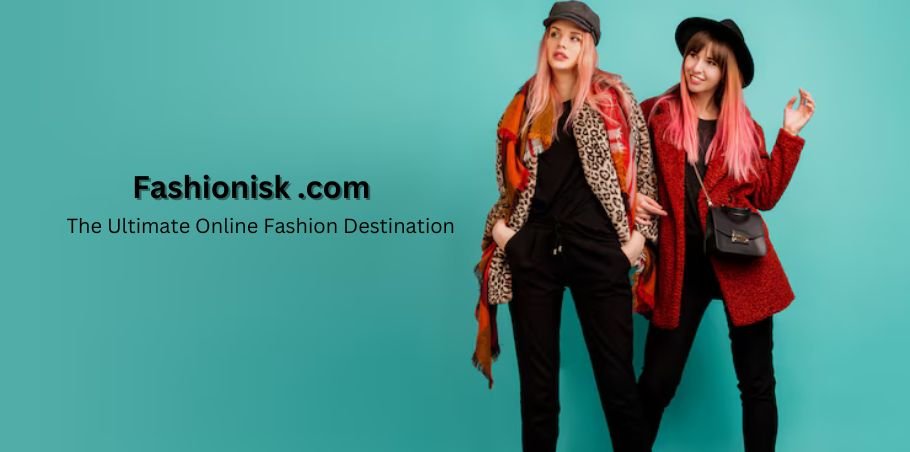French Fashion Monogram Since 1962: A Journey Through Iconic Design
French Fashion Monogram Since 1962 has been a defining element of luxury and style in the fashion world. This iconic trend, originating from the rich heritage of French haute couture, has evolved significantly over the decades. From its early adoption by elite fashion houses to its widespread influence in modern fashion, the monogram has become more than just a logo—it symbolizes sophistication, exclusivity, and personal identity. In this article, we’ll explore the journey of french fashion monogram since 1962 their impact on the industry, and what the future holds for this enduring trend.
The Rise of the French Fashion Monogram Since 1962
Monograms were originally used as personal signatures on luxury items, primarily to mark ownership and reflect personal identity. In the early 20th century, French fashion houses began adopting monograms not just as logos but as decorative elements that became integral to their designs, However, it was in the 1960s that monogramming truly exploded in French fashion. Designers such as Louis Vuitton and Hermès were among the pioneers who elevated the monogram from simple initials to works of art. The “LV” monogram, for example, became more than just a logo—it became a status symbol that represented exclusivity and luxury.
French Designers Leading the Monogram Movement
In the 1960s, French fashion designers like Yves Saint Laurent, Chanel, and Louis Vuitton led the movement by prominently featuring their logos and initials on their products. Yves Saint Laurent, in particular, embraced the trend by using his iconic “YSL” monogram, which became one of the most recognized symbols in the world of fashion, The monogram trend soon spread beyond handbags and luggage to encompass a wide range of fashion items such as clothing, scarves, belts, and even shoes. This shift in fashion saw monograms becoming synonymous with status and wealth, appealing to the upper echelons of society.
The Monogram Boom of the 1970s
In the 1970s, monograms became a mainstay in high fashion, with French designers mastering the art of monogramming on their products. During this period, the use of monograms expanded into other fashion accessories such as jewelry, watches, and scarves, The classic LV monogram pattern became increasingly popular, adorning everything from handbags to trunks, and was even incorporated into clothing collections. Hermès also solidified its position in the world of luxury monograms with its distinct “H” logo that became a mark of sophistication and elegance.
Monograms as a Reflection of Personal Identity
French Fashion Monogram Since 1962 has increasingly served as a reflection of personal identity, allowing individuals to express their unique style and status. Over the decades, monograms have evolved from mere symbols of luxury to personalized marks of individual taste. French fashion houses have embraced customization, offering clients the option to add their initials or bespoke details to their monogrammed items. This personal touch enhances the value of these luxury pieces, making them not just fashion statements but also personal emblems. The ability to infuse personal identity into French fashion monograms underscores their enduring appeal and relevance in today’s fashion world.
The 1980s: Monograms Meet Pop Culture
By the 1980s, monograms were making waves beyond clothing, finding their way into everyday accessories. From handbags and belts to hats and shoes, fashion houses embraced monogramming across all product lines. This era saw the emergence of monogram-covered accessories that became symbols of power and status, Hermès’ “H” belt, for example, became a must-have item for fashion-conscious individuals. The ability to wear a designer monogram became a way to showcase taste and refinement in an era known for its extravagance.
The 1990s: The Minimalist Approach to Monograms
In the 1990s, the fashion world embraced a minimalist aesthetic, and monograms followed suit. French fashion monogram since 1962 houses toned down the bold, flashy designs of previous decades, opting for more subtle and understated monograms. Designers focused on clean lines, muted colors, and simpler patterns that aligned with the era’s preference for minimalism. While monograms remained a symbol of luxury, they took on a quieter, more refined role in fashion, reflecting the decade’s shift towards sophistication and simplicity rather than overt extravagance. This approach allowed monograms to retain their status while adapting to changing tastes.
The Role of Logos and Monograms in 90s Fashion
In 90s fashion, logos and monograms played a pivotal role, but with a more subtle approach than in previous decades. Designers shifted from the loud, oversized branding of the 80s to more understated, minimalist logos that complemented the era’s sleek, simple aesthetic. Monograms remained a mark of luxury, but they were incorporated in a refined and discreet way, often blending into the fabric or appearing as smaller details. This shift allowed fashion houses to maintain their signature identity while appealing to the decade’s growing demand for sophistication and understated elegance.
The Monogram Revival of the 2000s
In the 2000s, monograms made a significant comeback, with a new generation of fashion enthusiasts embracing the trend. French fashion houses like Louis Vuitton and Chanel returned to their roots, bringing back their iconic monograms in full force, This revival was driven in part by pop culture, with celebrities and influencers proudly wearing monogrammed items. The LV monogram, in particular, became a symbol of youthful energy and high fashion, making appearances on red carpets and in music videos.
The Influence of Pop Culture on Monogram Fashion
Pop culture had a significant influence on monogram fashion, especially in the 2000s. Celebrities and influencers like Paris Hilton, Kim Kardashian, and Rihanna prominently showcased monogrammed items from luxury brands, turning them into must-have fashion statements. The visibility of these monograms in music videos, red carpet events, and media appearances made them symbols of status and style. This celebrity endorsement helped solidify monogrammed fashion as a mainstream trend, blending high fashion with popular culture and making designer logos more accessible and desirable to a wider audience.
The Digital Age: Monograms in the 2010s and Beyond
With the rise of social media in the 2010s, the visibility of monograms reached new heights. Platforms such as Instagram and Pinterest allowed fashion enthusiasts to share their love for monogrammed items with a global audience. The hashtag culture helped monogrammed pieces go viral, making them even more desirable, Fashion influencers played a major role in bringing monogrammed fashion to a wider audience. They showcased monogrammed handbags, clothing, and accessories in carefully curated social media posts, further driving demand for these luxury items.
Innovations in Monogram Design
As we entered the 2020s, French fashion monogram since 1962 houses began innovating with new approaches to monogram design. Brands such as Louis Vuitton and Hermès have reimagined their classic monograms, introducing bold colors, unique patterns, and modern materials to appeal to the younger generation, Monograms have also expanded beyond fashion, finding their place in tech accessories, home décor, and even skincare products, proving that their appeal goes far beyond traditional fashion.
Why French Fashion Monograms Remain Popular
One of the main reasons monograms have remained popular since 1962 is their timelessness. While trends come and go, monograms have an enduring appeal that transcends fashion cycles. They offer a sense of exclusivity and prestige that resonates with people from all walks of life, Monograms also allow fashion lovers to express their individuality while still embracing the luxury of designer labels. This balance between personal identity and high fashion is what keeps monograms relevant in today’s fashion world.
The Impact of French Fashion Monogram Since 1962 on Global Brands
French Fashion Monogram Since 1962 has significantly influenced global brands, shaping how luxury and personalization are perceived worldwide. As French designers popularized monograms, international fashion houses adopted similar strategies to create their own iconic logos and monogram designs. This cross-cultural exchange enriched global fashion, blending traditional French elegance with diverse regional styles. The widespread appeal of French monograms has led to collaborations and adaptations across various markets, further solidifying their status as a universal symbol of luxury and exclusivity.
French Fashion Monogram Since 1962: Influences on Contemporary Design
French Fashion Monogram Since 1962 has left a lasting imprint on contemporary design, inspiring modern fashion trends and branding strategies. The timeless appeal of French monograms continues to influence current designers who incorporate classic elements into their collections while adding innovative twists. This ongoing influence reflects the adaptability of monograms, which seamlessly blend with both traditional and cutting-edge designs. By drawing on the rich history of French monogramming, contemporary fashion continues to honor and reinvent this iconic trend, ensuring its relevance in today’s dynamic fashion landscape.
Personalization and Individuality in Fashion
Personalization has become a major trend in fashion, allowing individuals to express their unique identity through customized designs. Monogramming plays a key role in this, as fashion lovers can add their initials or bespoke details to clothing, accessories, and luxury items. This sense of individuality appeals to those seeking exclusive, one-of-a-kind pieces that reflect personal style. By offering customization options, brands allow consumers to blend their personal touch with high fashion, making each item not just a product, but a reflection of the wearer’s identity.
The Future of French Fashion Monogram Since 1962
The future of French fashion monogramming is likely to embrace both tradition and innovation. As sustainability becomes a priority, luxury brands are exploring eco-friendly materials and ethical production practices in their monogrammed collections. Technology may also play a role, with the potential for digital or interactive monograms that offer new ways to personalize fashion. Despite these modern advancements, the core appeal of monogramming—symbolizing luxury, identity, and exclusivity—will continue to resonate with consumers, ensuring its place in the evolving fashion landscape.
French Fashion Monogram Since 1962: Predictions for the Next Decade
French Fashion Monogram Since 1962 is poised to evolve dramatically in the next decade. As sustainability becomes increasingly important, luxury brands are likely to incorporate eco-friendly materials and ethical practices into their monogrammed collections. Technological advancements may also lead to innovative approaches, such as digital or interactive monograms that offer new levels of personalization. Despite these changes, the core essence of monograms—signifying luxury and individuality—will remain unchanged. The future of French fashion monogramming promises to blend tradition with modernity, maintaining its status as a symbol of style and sophistication.
Conclusion
French Fashion Monogram Since 1962 has evolved from a simple mark of ownership to a symbol of luxury and personal expression. From the bold and extravagant designs of the 1960s and 70s to the minimalist and refined approaches of the 1990s, monograms have adapted to changing fashion trends while maintaining their core appeal. The resurgence in the 2000s and the current embrace of sustainability and technology signal that monograms will continue to play a significant role in fashion. As we look to the future, French fashion monograms will remain a cherished emblem of style and sophistication, reflecting both timeless elegance and modern innovation.
Share this content:














Post Comment